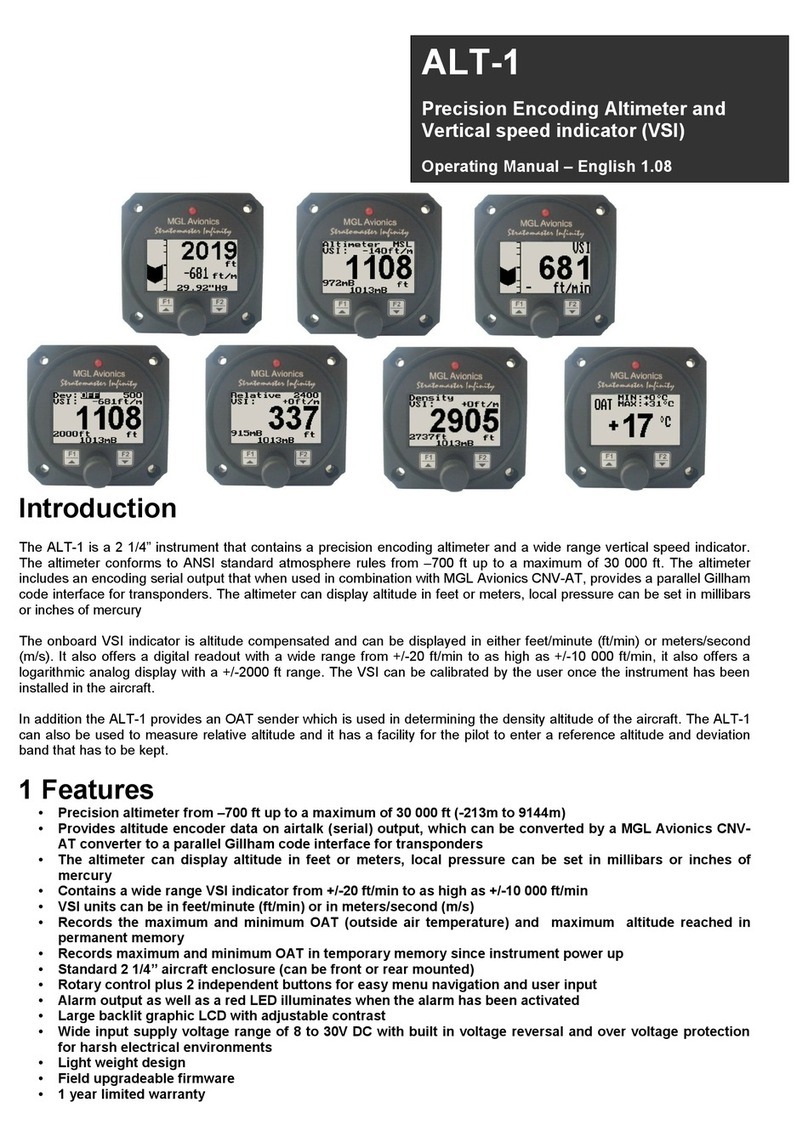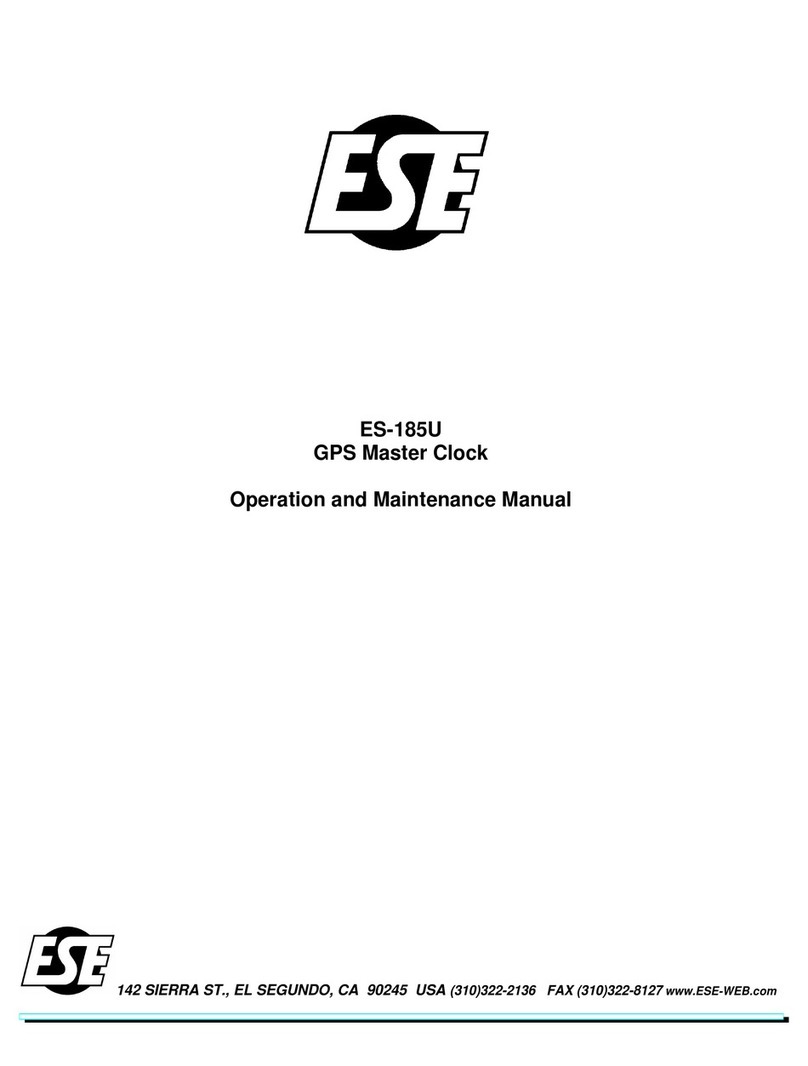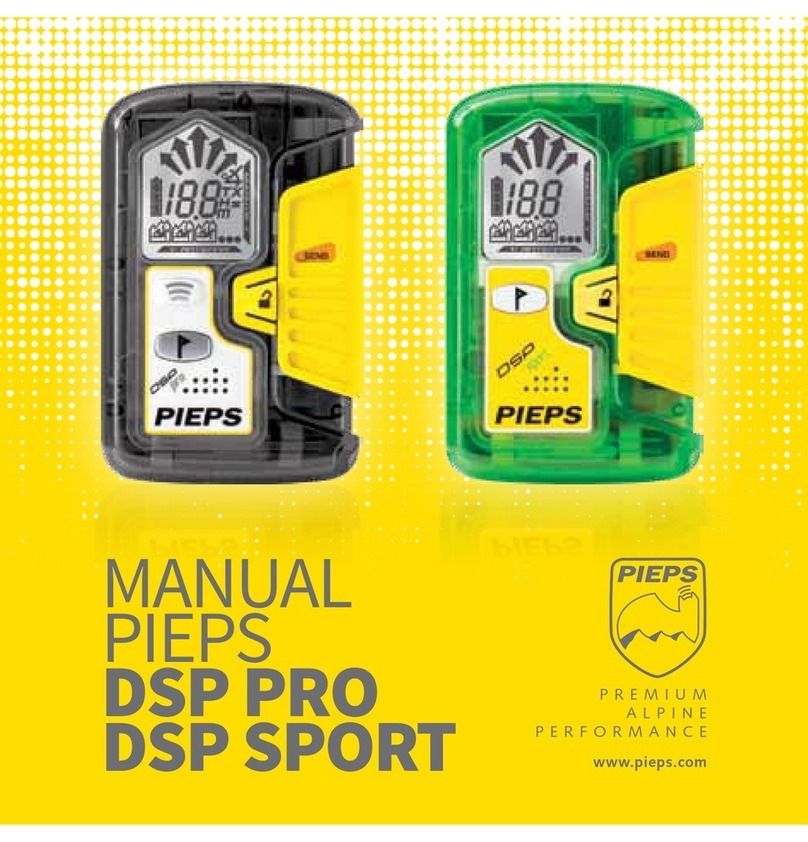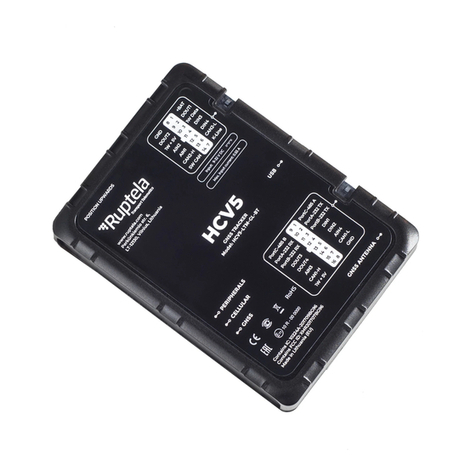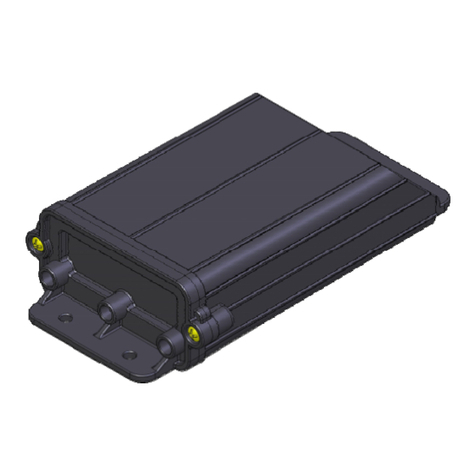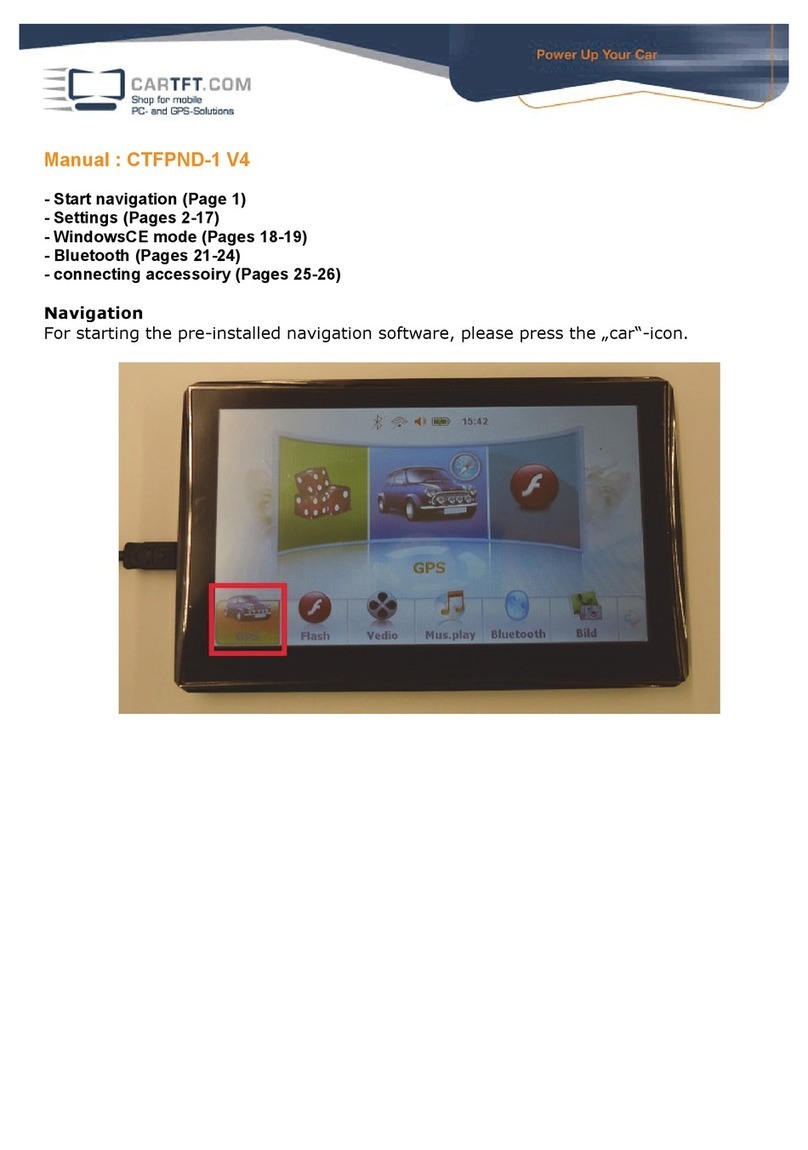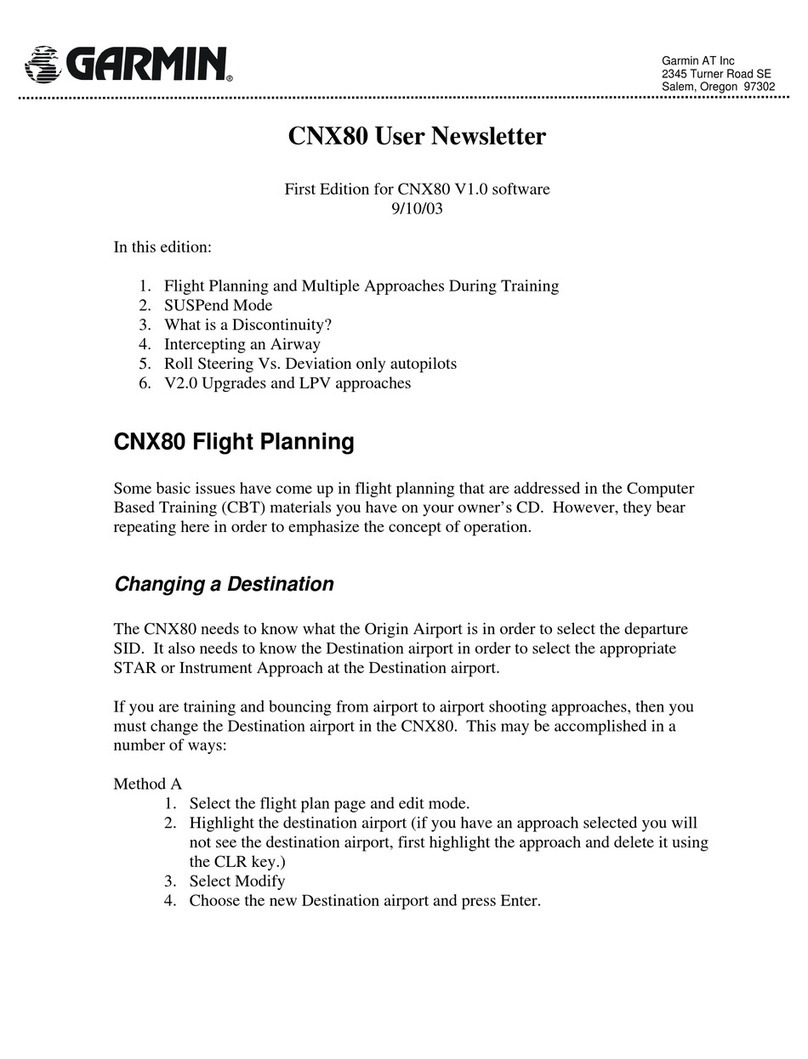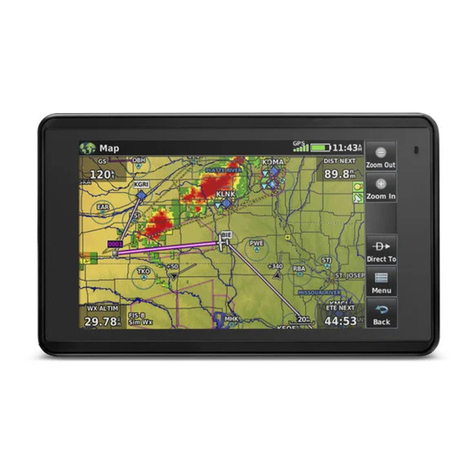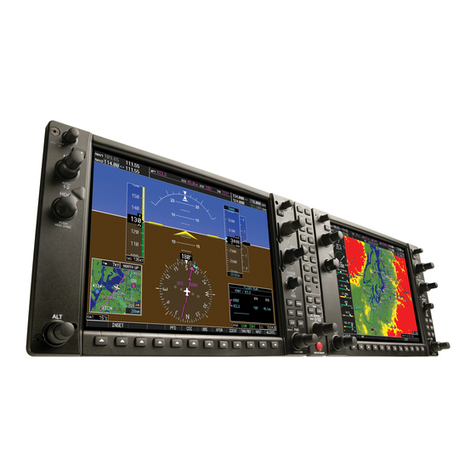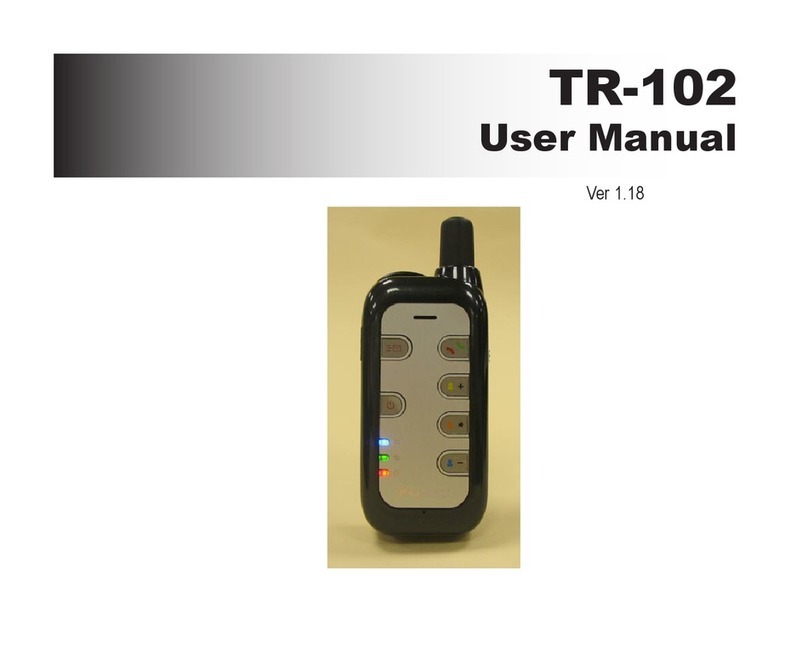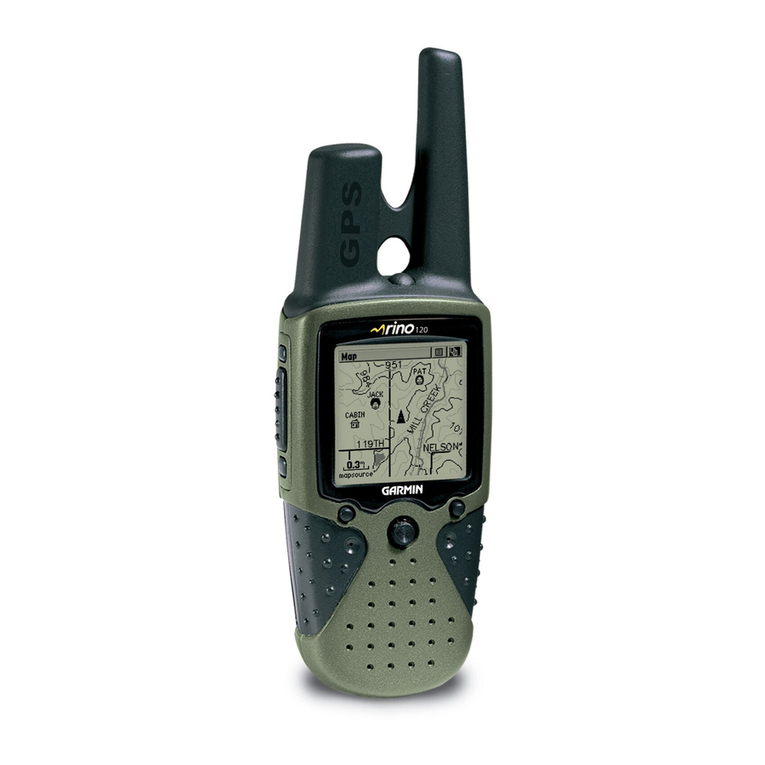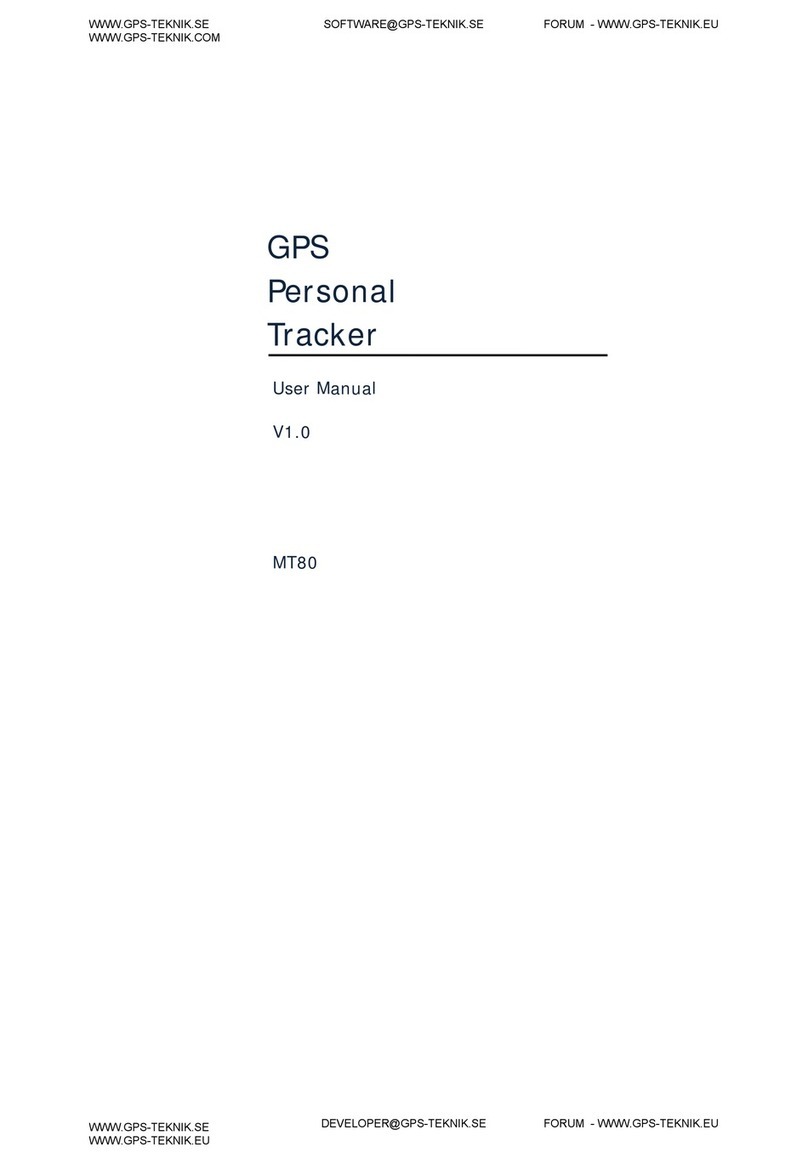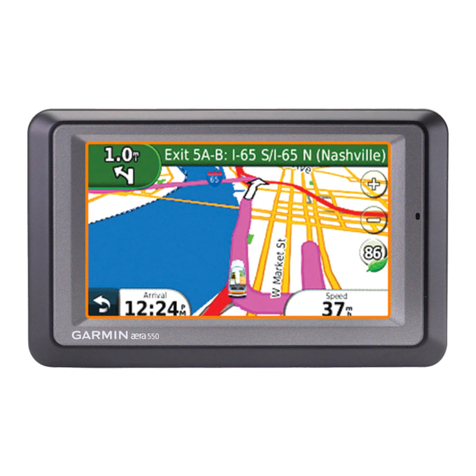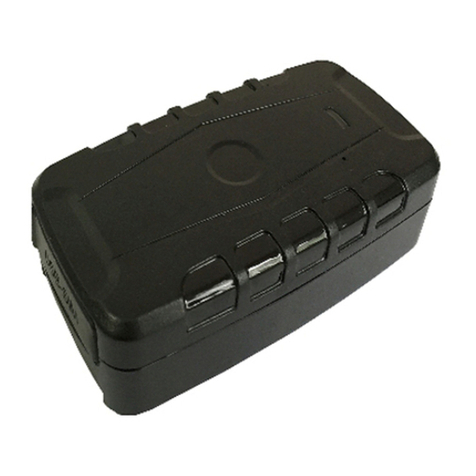MGL Avionics EFIS G2 Guide

©2018 www.stratomaster.eu
MGL Avionics EFIS G2 and
iEFIS
Guide to using the MGL RDAC CAN interface
with the LAD AERO Injection Kit on ROTAX 912-912S

©2018 www.stratomaster.eu
General ............................................................................................................................................................................. 3
Data connections.............................................................................................................................................................. 3
LAD AERO ROTAX 912 engine data from ECU .................................................................................................................. 4
Engine RPM (from ECU)......................................................................................................................................... 4
Manifold air pressure (from ECU).......................................................................................................................... 4
Water temperature (from ECU)............................................................................................................................. 4
Oil pressure (from ECU)......................................................................................................................................... 4
Oil temperature (from ECU) .................................................................................................................................. 4
Fuel pressure (from ECU)....................................................................................................................................... 4
Fuel Flow (from ECU).............................................................................................................................................. 4
OAT (from ECU)...................................................................................................................................................... 4
VOLTS (from ECU).................................................................................................................................................. 4
Lambda (from ECU) ............................................................................................................................................... 5
TPS % (from ECU)................................................................................................................................................... 5
Functions provided by the RDAC CAN.............................................................................................................................. 5
Fuel level sender inputs ......................................................................................................................................... 5
DC current monitoring input.................................................................................................................................. 5
Oil pressure sender (4-20mA)................................................................................................................................ 5
Oil pressure sender (resistive)............................................................................................................................... 5
Oil temperature sender (resistive)......................................................................................................................... 6
Fuel pressure (from sender) .................................................................................................................................. 6
Diagnostics............................................................................................................................................................. 6
Connector pins.................................................................................................................................................................. 6
DB9 connector (Female on device, plug is male)................................................................................................... 6
DB25 connector (female on device, plug is male) ................................................................................................. 6
Grounding the RDAC CAN...................................................................................................................................... 7
Power supply requirements for the RDAC CAN..................................................................................................... 7
RDAC CAN dipswitch assignment .......................................................................................................................... 7
RDAC Address ........................................................................................................................................................... 7
RDAC inputs .............................................................................................................................................................. 7
Status LED .............................................................................................................................................................. 7
Error codes............................................................................................................................................................. 7
G2 EFIS setup .................................................................................................................................................................... 8
CAN bus primer................................................................................................................................................................. 8
Making twisted wire .............................................................................................................................................. 8
Shielded, twisted wires.......................................................................................................................................... 8
Basic wiring checks ................................................................................................................................................ 8

©2018 www.stratomaster.eu
General
The RDAC CAN LAD interface forms the bridge between the LAD AERO ECU and an MGL
Avionics EFIS system. The RDAC CAN emulates the RDAC XF system.
The RDAC CAN LAD can extract the following engine data from the ECU CAN bus stream:
a) Engine RPM
b) Manifold air pressure
c) Water temperature
d) Oil pressure
e) Oil temperature
f) Fuel pressure
g) Fuel Flow
h) OAT
i) VOLTS
j) Lambda
k) TPS %
The standard LAD AERO injection kit wiring loom does not include wiring for oil pressure, oil
temperature, fuel pressure senders. It may be more convenient to connect senders to the
corresponding inputs on the RDAC-CAN D25 connector. See page 5.
Selection of the data source (ECU or D25 connector) is done with switches 3 to 6, see page 7.
The RDAC CAN LAD interface provides the following physical interfaces:
a) Single CAN Interface to LAD AERO ECU (1Mb, 29bit ID).
b) Single CAN Interface to iEFIS (250Kb, 11bit ID).
c) Two fuel level sender inputs with internal pullups suitable for resistive senders. Pullup
resistors can be disabled allowing senders with a voltage output to be connected.
d) One Oil pressure input suitable for use with a 4-20mA or 0-5V voltage output
electronic sender.
e) One Oil pressure input suitable for use with resistive sender (e.g. VDO 10B)
f) One Oil Temperature input suitable for connection to Rotax912 NTC Oil Temperature
sender
g) One Fuel pressure input suitable for use with 0-5V voltage output electronic sender
(e.g. UMA 7PSI)
h) One input for a DC current monitor centered around 2.5V (range 0.5-4.5V).
Data connections
Connect the CAN ECU of the RDAC CAN interface to the CAN bus of the LAD AERO ECU.
Fit termination resistor of 60-100 ohms value between the CAN High and CAN Low wires (in
case of a single resistor, CAN bus length <= 2 meters).
Connect the RDAC EFIS CAN to the CAN interface of the EFIS.
Observe CAN bus termination resistor recommendations for this connection as written in the EFIS
installation manual. Also read the “CAN bus primer” at the end of this manual, page 8.
Note: Do NOT connect the two CAN buses together. They are two separate buses each
running at their own communications speed and using their own data exchange protocols.

©2018 www.stratomaster.eu
LAD AERO ROTAX 912 engine data from ECU
The RDAC CAN provides the following engine data from ECU:
Engine RPM (from ECU)
Please configure your EFIS for 1.0 pulses per revolution.
Note: For EFIS screen designs this reading is available as RPM1.
Note: The RPM value of 9001 will be shown on the EFIS if the interface is connected to the EFIS
but no data is being received from the ECU.
Manifold air pressure (from ECU)
No EFIS configuration is needed other than setting of desired indicator ranges. Please set
manifold calibration to zero unless you have an accurate reference source. In that case you may
use the calibration as needed.
Note: For EFIS screen designs this reading is available as MAP
Water temperature (from ECU)
Please configure your EFIS for “Probe type: LM335 semiconductor”.
Note: For EFIS screen designs this reading is available as COOLANT. It is also available as
TC 4 configured as K-Type probe.
Oil pressure (from ECU)
SW3 ON
Please configure your EFIS for “Probe type: Linear 0-5V”
Note: For EFIS screen designs this reading is available as Oil Pressure.
Oil temperature (from ECU)
SW5 = ON
Please configure your EFIS for “Probe type: LM335 semiconductor”.
Note: For EFIS screen designs this reading is available as “Oil Temperature”.
Fuel pressure (from ECU)
SW6 = ON
Please configure your EFIS for “Probe type: Linear 0-5V”
Note: For EFIS screen designs this reading is available as “Fuel Pressure”.
Fuel Flow (from ECU)
Please configure your EFIS for “Probe type: Turbine” and “K-Factor=7000”.
Note: For EFIS screen designs this reading is available as “Fuel Flow1”.
OAT (from ECU)
The LAD AERO ECU provides an OAT reading. This is mapped to TC3 (as K-Type probe). The
EFIS uses its own OAT sender. The LAD AERO engine OAT is used as cold junction reference for
all TC channels (even though no thermocouple probes are used).
VOLTS (from ECU)
The LAD AERO ECU provides a supply voltage reading. This is mapped to Volts.
Note: For EFIS screen designs this reading is available as VOLTS.

©2018 www.stratomaster.eu
Lambda (from ECU)
The LAD AERO ECU provides a Lambda reading.
This is mapped to TC11 (as K-Type probe).
TPS % (from ECU)
The LAD AERO ECU provides a TPS (Throttle Position Sensor) reading in %.
This is mapped to TC12 (as K-Type probe).
Functions provided by the RDAC CAN
The RDAC CAN provides additional sensor monitoring inputs on the D-25 connector.
Fuel level sender inputs
These inputs are marked “FL1” (D25 pin 13) and “FL2”(D25 pin 12).
These are intended for connection to resistive fuel level senders. The RDAC CAN provides
internal pullup resistors (470 ohms to 3.6V). These pullup resistors are switched into the circuit
if the internal DIP switch array 7 and 8 are in the “ON” position.
If the switches are “OFF”it is possible to connect electronic level senders with a voltage
output provided the output voltage is in the range of 0V to about 3.3V.
Fuel level sender readings are presented to the EFIS in a fashion compatible with the RDAC XF.
DC current monitoring input
Connect a DC current monitoring sensor to input D25 pin 8. The current sensor should
produce a voltage of around 2.5V for a zero current and increase or decrease this voltage
depending on the magnitude and direction of the current. Range is 0-5V.
Perform zero and gain calibration in the EFIS Voltage/Current setup as required.
Oil pressure sender (4-20mA)
SW3 OFF; SW4 OFF
Connect pressure sender to D25 pin 7.
Rotax 4-20 mA oil pressure sender: Connect a 100Ω resistor between input (pin7) and ground.
Configure your EFIS for “Probe type: 4-20mA”. Pressure sender range is 10 bars.
Note: setup for standard ROTAX 912 oil pressure sender. Any sender compatible with a DC
input range of 0-5V and within selection options in the EFIS setup may be used.
Note: For EFIS screen designs this reading is available as “OilPressure”.
Oil pressure sender (resistive)
SW3 OFF; SW4 ON
Connect pressure sender to D25 pin 10.
Rotax resistive (10-180Ω) oil pressure sender.
Internal pull-up resistor 1.0KΩ to internal 3.3V.
Configure your EFIS for “Probe type: Automotive resistive”. Sender range is 10 bars.
Quick test: A 120 ohm resistor between input and interface ground should result in a
pressure reading of approximately 6.3B.
Note: For EFIS screen designs this reading is available as “OilPressure”.

©2018 www.stratomaster.eu
Oil temperature sender (resistive)
SW5 OFF
Connect Oil temperature sender to D25 pin 11.
ROTAX Oil Temperature sender (resistive VDO 150°C) NTC to ground.
Internal pull-up resistor 1.5KΩ to internal 3.3V.
Note: For EFIS screen designs this reading is available as “OilTemperature”.
ConfigureOilTemperatureprobe type as Standard NTC.
Quick test: A 120 ohm resistor between input and interface ground should result in a
temperature reading of approximately 76 degrees Celsius.
Fuel pressure (from sender)
SW6 = OFF
Connect Fuel pressure sender (0-5V) to D25 pin 11.
Configure your EFIS for “Probe type: Linear 0-5V”
Note: For EFIS screen designs this reading is available as “Fuel Pressure”.
Diagnostics
Please consult the EFIS diagnostics functions for raw measurement information. CAN RDAC
ECU information for this engine will show largely as blanks as no information is available from
the engine.
Connector pins
DB9 connector (Female on device, plug is male)
1 Ground (Power supply negative).
2 +12V DC power supply for interface.
3 No connection
4 No connection
5 No connection
6 EFIS CAN Low
7 EFIS CAN High
8 ECU CAN Low
9 ECU CAN High
DB25 connector (female on device, plug is male)
1-6 No connection
7 Oil pressure sender input (4-20mA, connect 100Ω resistor from input to ground)
8 Current sensor input (voltage centered at 2.5V for “no current”)
9 Fuel Pressure sender input (0-5V)
10 Oil pressure sender input (resistive)
11 Oil temperature input 1 (ROTAX 150°C NTC)
12 Fuel level sender 2 input
13 Fuel level sender 1 input
14-19 No connection
20 No connection
21-25 Ground (same ground as power supply ground on DB 9).

©2018 www.stratomaster.eu
Grounding the RDAC CAN
As the RDAC can needs to refer to sensors that are grounded on the engine block, the RDAC
power supply ground and any other ground on this device must be connected to the engine
block. Note that you should provide a single, secure ground connection to the engine block. The
engine block must then have its own ground connection to the aircraft's power supply negative
(battery, alternator etc).
Do NOT wire more than one ground connection from the RDAC (for example one wire to the
battery negative, other to the engine block). Only one connection to the engine block.
Failure to adhere to this can result in incorrect sensor readings.
Power supply requirements for the RDAC CAN
Nominal 12V DC. Range: 8.5V to 36V. Voltages above 16V may only be applied short term (less
than 30 seconds below 20V, less than 5 seconds to 36V). Power supply must be filtered and free
of surges, spikes and noise.
Current consumption: 50mA typical, maximum 70mA with fuel level senders grounded and pull up
resistors switched on.
RDAC CAN dipswitch assignment
RDAC Address
RDAC CAN may be assigned as RDAC 1, 2, 3 or 4 by means of DIP switches 1 & 2.
Note: Odyssey/Voyager support only RDAC 1 and 2.
Switch
RDAC 1
RDAC 2
RDAC 3
RDAC 4
1
off
on
off
on
2
off
off
on
on
RDAC inputs
RDAC CAN inputs can be configured by means of DIP switches 3 to 8.
Switch
ON
OFF
Function
3
ECU
D25-7 or 10
Oil Pressure Source
4
D25-10
D25-7
Oil Press Type: Resistive / 4-20mA
5
ECU
D25-11
Oil Temp Source
6
ECU
D25-9
Fuel Press Source
7
470Ω
None
Fuel Level 2 pullup
8
470Ω
None
Fuel Level 1 pullup
Status LED
The RDAC CAN has a green status LED indicator.
Single flash: RDAC CAN is powered and working but there is not data received on the ECU
CAN bus.
Double flash: RDAC CAN is powered and working, data is being received on the ECU CAN bus.
Error codes
The RDAC CAN interface transmits the value 9001 as RPM in case there is no data received
from the ECU.
As the EFIS should be setup for 1.0 pulses per revolution (RPM setup menu) this results in the
value 9001 displayed on the EFIS in this case.
If no data is received from the ECU for one second, all values will be transmitted as “zero”
(except for the RPM which is transmitted as 9001).
Tip: If the RPM overspeed alarm is set and enabled, this will trigger the alarm on the EFIS.

©2018 www.stratomaster.eu
G2 EFIS setup
The G2 EFIS (Odyssey/Voyager) have two RDAC inputs intended for use with MGL's
traditional RDAC systems. Starting from RDAC model XF, the CAN bus is favored for the
RDAC data feed connection. The G2 needs to be told that you would like to use the CAN
bus for the RDAC. You do this in the “Engine monitoring setup”:
There is no setup required for the iEFIS as the
iEFIS uses only the CAN bus for RDAC
connections. With the traditional RDAC devices
fuel pressure input and current sensor inputs used spare RDAC inputs and this required selection
of the inputs as needed. With the CAN based RDAC units this is not required as the CAN based
systems have dedicated inputs for these senders and the input selections are blanked out.
Note: G2 RDAC on CAN bus is supported from software version 1.1.0.0 or higher.
CAN bus primer
The CAN bus (Controller Area Networking) was defined in the late 1980 by Bosch, initially for
use in automotive applications.
It has been found to be very useful in a wide variety distributed industrial systems and is
becoming popular in avionics applications due its robustness and ease of use.
The connection uses two wires
which are twisted around each other.
This forms a “balanced transmission
line”. It helps to reduce emissions
and also makes the link more robust
against external interferences.
The CAN bus is always implemented
as a single cable allowing only short
stubs to connect to equipment along the route. Never implement a CAN bus as a “star” or other
wiring topology.
The CAN bus requires termination resistors at each end of the bus. These are to be 120 ohm
resistors. 1/4W or 1/8W resistors are usually used here. The resistors must be installed at each
end of the bus, not in the center or anywhere else.
For short CAN runs (less than three meters) it is possible to install a single resistor of lesser
value (not less than 60 ohms) at any location in the cable run.
The two wires are referred to “CAN High” and “CAN Low”. These must connect to the
corresponding lines at the devices. Never swap these connections (I.e. Never connect CAN H to
CAN L at any device) as the CAN bus will not be able to function.
Never run the CAN bus connection inside a wire harness next to sensitive connection such as
audio or signal wires. Never run the CAN bus next to RF cables.
Making twisted wire
It is very easy to make your own twisted wire. Simply take two equally long wires (for example
5 meters) in parallel and tie one end (both wires) to a fixture (a door handle works well). Insert
the other end (both wires) into a drill. Stretch the wires so they are straight. Run the drill for a few
short bursts at slow speed and you have a created a perfect twisted pair!
Shielded, twisted wires
It is possible to purchase shielded, twisted wire. This can be used in applications where there
may be electrical noise issues. In this case we advise to connect the shield to ground ATA
SINGLE LOCATION ONLY. This prevents creating a “ground loop” which can cause EMI issues.
Basic wiring checks
You can use a volt meter to perform basic checks on a CAN connection. With at least one device
connected and powered you should be able to measure voltages of around 1.0 –3.0 volts on
each cable with respect to ground. The voltage should appear very similar on each connection.
Other manuals for EFIS G2
1
This manual suits for next models
1
Table of contents
Other MGL Avionics GPS manuals
